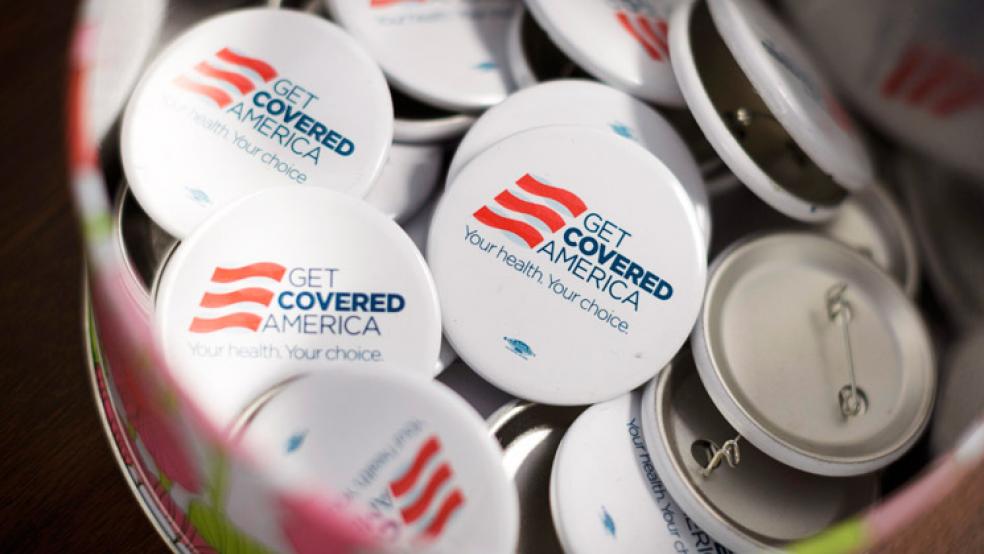Battered by criticism over the troubled launch of Obamacare, President Obama said this week he is still confident his aides can fix the hobbled website. But he stressed, “We’re obviously going to have to remarket and rebrand” the program.
Even if the administration manages to meet its target of getting the federal website working effectively for “the vast majority of Americans” by month’s end, rehabilitating the Affordable Care Act’s tarnished image will be a heavy lift.
Related: Insurers Could Get Multi-Millions in Obamacare Bailout
- Since the rollout began Oct. 1, few Americans have been able to log on and sign up for health insurance plans on HealthCare.gov, the federal government website being used in 36 states.
- Insurance companies have cancelled millions of policies that didn’t meet the new Obamacare standards, prompting widespread outrage.
- Republicans – as well as a number of IT experts who testified on Capitol Hill this week – have said the system is highly vulnerable to security breaches and identify theft.
- The president was reduced to urging people to actually avoid the website and enroll by phone or by paper.
In short, the administration is living a public relations nightmare that will end only when it fixes the website and persuades the public that – far from being a failure – Obamacare eventually will succeed in providing affordable health insurance to millions of Americans currently without it.
Opposition to the new health care law hit a record high this month, with 57 percent saying they oppose Obamacare, according to a new Washington Post-ABC News poll.
But how to win back a shaken and irate public’s confidence?
Related: Obamacare Individual Mandate May Be Next to Fall
The administration already has taken several important steps in this direction: To fix the website, it installed a team of tech experts headed by former White House budget chief and management expert Jeffrey Zients. Health and Human Services officials hold daily press briefings to tout progress on repair work and respond to criticisms.
Obama apologized for misleading people into thinking they could retain their current health insurance plans if they liked them and urged insurers to restore the millions of canceled plans. The White House has also staged a number of high-profile events to promote the virtues of Obamacare.
HHS set aside $1.2 billion earlier this year to promote enrollment, including a large chunk of money that has been held in reserve until the website is functional and able to handle an applicant surge.
“We’re organizing a big last-minute push in December,” said Justin Nisly, national press secretary for Enroll America, a nonpartisan and privately funded organization that seeks to maximize the number of uninsured Americans who sign up for insurance under Obamacare.
“We’ll have people on the ground in communities across the country. We'll be in beauty salons and farmers markets telling people how to get affordable coverage through the exchanges.”
Enroll America has also been highlighting Obamacare “success stories,” as it did in a press release Thursday describing a 27-year-old Florida resident who “finally [found] coverage after a difficult year without insurance.”
Related: The Real Problem of the Failed Obamacare Rollout
Changing the narrative from endless web failures to success stories is critical to the rebranding process, Ben Boyd, a senior executive at Edelman, the world’s largest public relations firm, told NPR earlier this week:
“First, immediately begin talking about the success stories. Tell human stories about the difference the access to health care has made for families, individuals. Work across all channels, in multiple ways. Get labor unions, small business, third parties to tell their stories – that’s more effective.
“Second, accountability,” Boyd [also told NPR]. “This was a massive screw up. People want a reason to believe, and the administration is trying to give that. They called it a ‘tech surge.’ I got it, but now, who’s on it? … Get a photo of the president sitting at a table with the head of innovation at Microsoft, Intel, and get him, sleeves rolled up, at a computer looking at the website interface.”
Mark McClellan, a former HHS official during George W. Bush’s presidency, said the website should be fixable, but that the Obama administration must look beyond the sign-up period to other problems certain to arise.
“It takes end-to-end strategic focus and being ready to address the predictable challenges that are coming,” said McClellan, who oversaw the launch of the Medicare Part D prescription drug program in 2006.
The Bush administration had relatively minimal technical problems in launching that program’s website. There were scores of technical headaches after the sign-up period, though, when many seniors complained, for instance, that pharmacies could not find electronic records of their policies and subsidies.
McClellan, a senior fellow at the Brookings Institution, described the rebranding process as akin to a plane stuck on a runway and the pilot trying to gain the confidence of impatient passengers. “You may not know exactly when everything will be done, but the more you can tell us what exactly the problem is and when you’re going to fix it – and show some real progress on that – the more tolerance there will be.”
But there are limits to what the administration can do.
There is no 21st-century Don Draper that’s dropped by the Oval Office with suggestions" to rebrand Obamacare, White House spokesman Josh Earnest told The Washington Free Beacon.
Top Reads from The Fiscal Times:
- The President’s Non-Apology Apology on Obamacare
- Time to Ditch Obamacare: A Plan to Rob Taxpayers
- How Democrats Could Kill Obamacare
This article was updated at 9:56 a.m.






